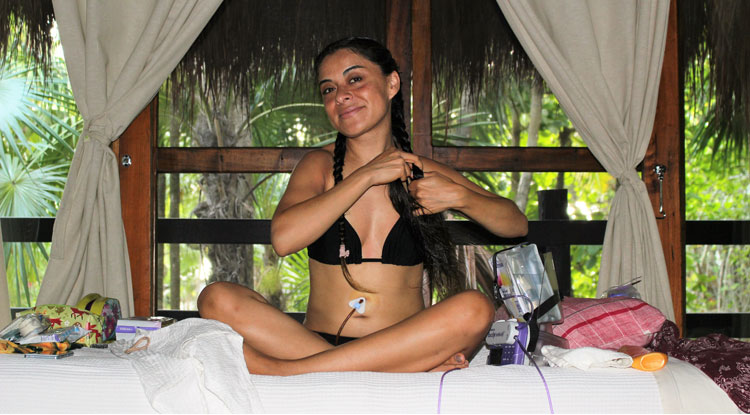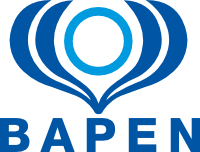PINNT’s Home Artificial Nutrition (HAN) Awareness Week 7-13 August 2017

PINNT (Patients on Intravenous & Naso-Gastric Nutrition Therapy), the UK wide charity and support group for people receiving home parenteral and enteral nutrition therapy are holding their fifth HAN Awareness Week from 7th-13th August and celebrating their 30th Anniversary. www.pinnt.com
Artificial nutrition therapies for babies, children and adults are often life-saving therapies and are certainly life-enhancing. However, they are complex therapies requiring support for patients from healthcare professionals as well as PINNT and its network of experienced volunteers.
We would like to share the story of one such patient – Monsterrat Moya North (Montse) who, despite the severity of her condition gastroparesis has an inspiring ‘appetite for life’ and feels compelled to help others less fortunate than herself and raise awareness of her condition.
Dr Charlotte Rutter, Consultant Gastroenterologist at Southampton General Hospital, who looks after patients requiring nutritional support including Montse explained: “Gastroparesis is a condition of the stomach which results in delayed emptying. It may be caused by damage to the nerves or muscles but in some cases, the cause may not be found. Symptoms include nausea and vomiting and when long term and severe, food and fluids are not tolerated resulting in dehydration and poor nutrition. A feeding tube is inserted into the stomach or small bowel to provide long term artificial hydration and nutrition at home (HAN). Adequate hydration and nutrition are essential for normal body function, help reduce the risk of illness and promote healing after injury.”
Obtaining adequate nutrition and hydration for Montse means she has to be connected via a feeding tube 24 hours a day (she has a portable feeding system which she carries around with her in a special rucksack at all times). However, despite coping with this relatively unknown, chronic condition, Montse wants to raise the profile of gastroparesis to generate greater awareness of the life-saving treatment she receives on a daily basis via HAN and to reassure new patients who might be going through what she has. She is also keen to promote the positive aspects that tube feeding can give to people who have life-threatening illnesses and to demonstrate that a full and active life can be led – despite these conditions.
Montse has an extremely positive attitude to life and a desire to help others. Whilst she undoubtedly has to deal with the many downsides of having gastroparesis (low energy levels, being completely reliant on artificial feeding and the restrictions this places on her, feeling very hungry much of the time and of course the nausea and sickness) – she has an appetite for life which is second to none.
In fact, she is so keen to help others less fortunate than herself and raise awareness of this hidden condition that she is raising money for two charities, PINNT and The Little Princess Trust (who provide real hair wigs for children suffering with hair loss due to cancer treatment and other illness.)

Montse would love to raise as much money as possible to support these two important and help raise the profile of Home Artificial Nutrition during PINNT’s 2017 HAN Awareness Week.
For more information about Montse’s fundraising and to make a donation – please visit https://uk.virginmoneygiving.com/donation-web/fundraiser?fundraiserActivityId=856948
BACKGROUND INFORMATION
- PINNT – Patients on Intravenous Naso-gastric Nutrition Therapy – is a charity and patient support group founded 30 years ago by patients to provide mutual support to all those receiving artificial nutrition at home. Artificial nutrition therapies include parenteral nutrition (delivered via a line direct through the vein) and enteral nutrition via tube into the nose, stomach or bowel. www.pinnt.com
- Parenteral Nutrition (PN) is given via a dedicated catheter (CVC – central venous catheter) which is placed in a main vein. The tip of the catheter sits close to the heart.
- Enteral Nutrition (EN), tube feeding, is given via different types of tubes. Tubes can be placed down through the nose into the stomach or bowel, known as Nasoenteric Feeding and includes naso gastric (NG), naso duodenal and naso jejunal (NJ) feeding. Alternatively a tube can be placed directly through the skin into the stomach or bowel, known as Enterostomy Feeding, which includes percutaneous endoscopic gastrostomy (PEG) and percutaneous endoscopic jejunostomy (PEJ).
- Numbers of children and adults on artificial nutrition therapy (parenteral, enteral and supplemental feeding) in UK are estimated at around 35,000 in total at any one point in time, with around 2,000+ on the most technical feeding. The best data is currently collected by the British Artificial Nutrition Survey (BANS) a sub-committee of BAPEN, which is reliant on volunteer reporting centres.
- Artificial nutrition therapies for babies, children and adults are often life-saving therapies and are certainly life-enhancing but they are complex therapies requiring support for patients from healthcare professionals as well as PINNT and its network of experienced volunteers.
- The Little Princess Trust provides real hair wigs free of charge to children across the UK and Ireland who have lost their own hair due to cancer treatment or other illnesses. For more information visit www.littleprincesses.org.uk


